10 Things You May Be Surprised To Know About Growing Japanese Maples
If you’re looking for ideas on how to grow beautiful Japanese Maples, these tips will give you a great head start. You may be surprised by some of them!
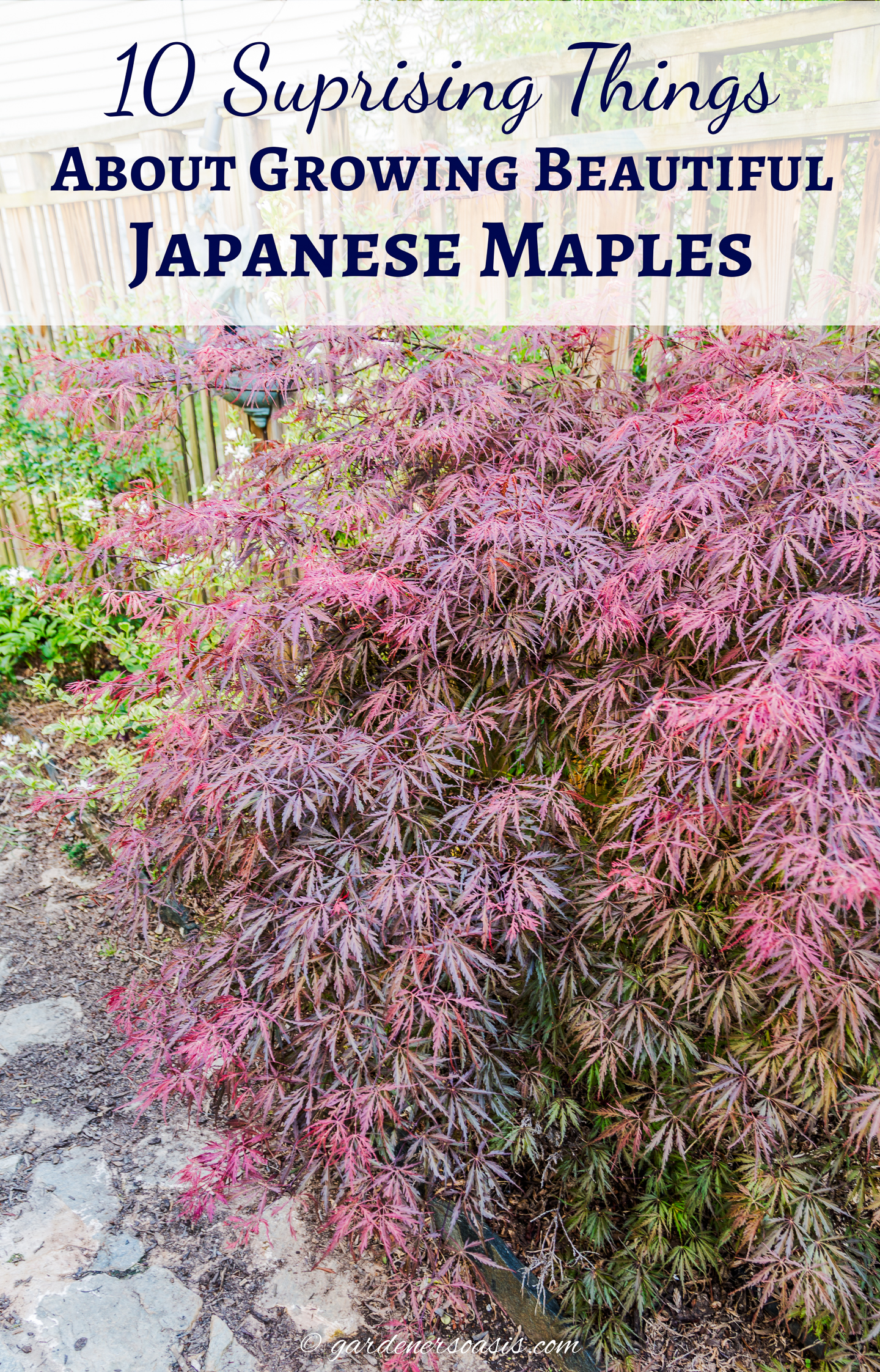
Scientific name: Acer palmatum
Zone: 4 to 9 (depending on the variety)
Exposure: Part shade
Height: 2′ to 25′ (depending on the variety)
Width: 4′ to 25′ (depending on the variety)
I love Japanese maples!
With their delicate leaves, beautiful foliage colors and graceful form, they make a statement in any garden.
Because they look so graceful and elegant, a lot of people also think they’re hard to grow.
But nothing could be further from the truth if you know what to do to keep them happy.
Keep reading to find my top tips for growing beautiful Japanese Maples.
1 | Young Japanese Maples should not be pruned
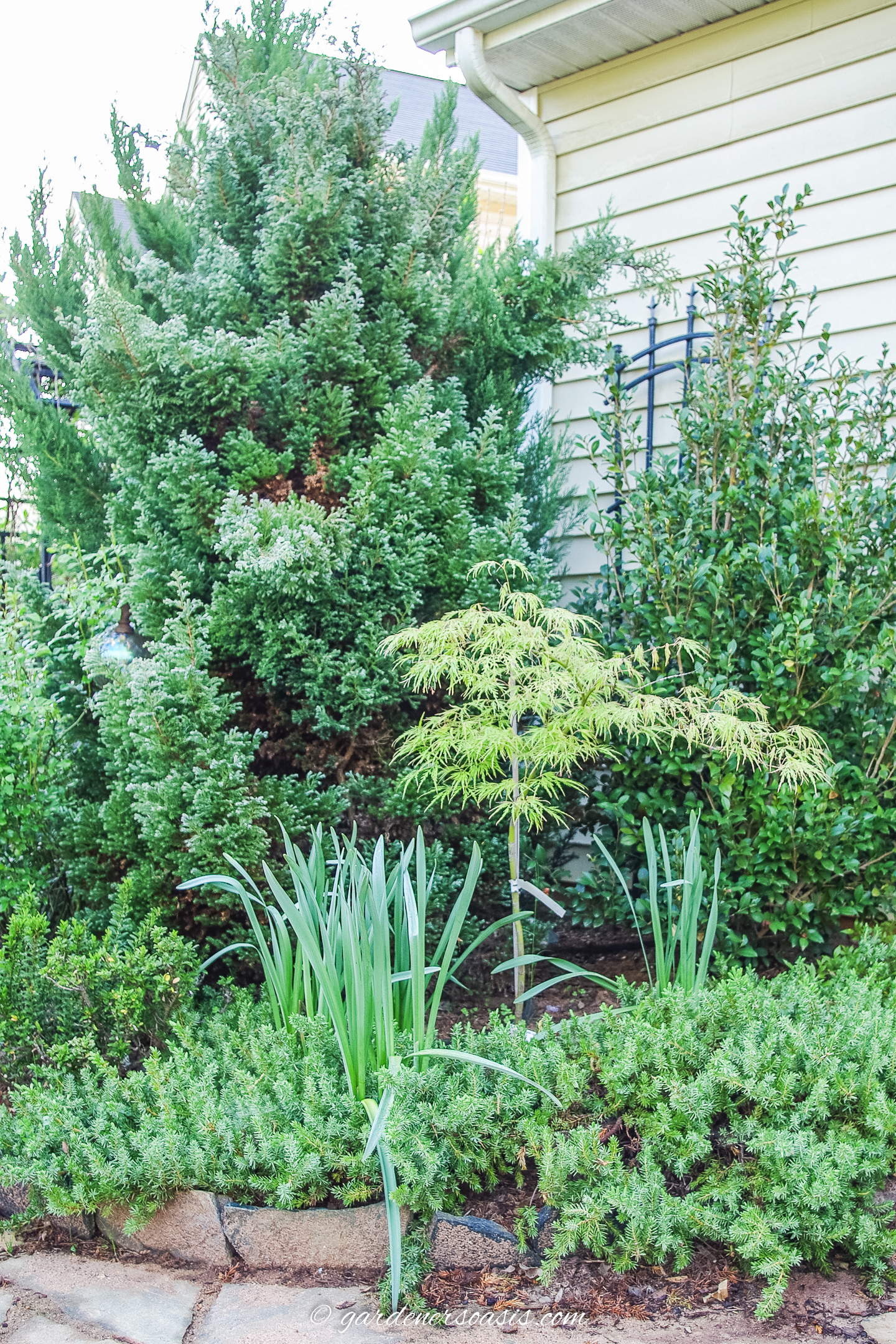
Pruning young Japanese Maples can lead to poor root development.
Even if you plan to remove some of the lower branches at some point, leave them in place for the first couple of years until the plant is stronger.
There is one exception: If you see suckers growing from the root stalk (they will have different shaped leaves than the rest of the plant), you do want to remove those. Many Japanese Maples are grafted. If you let the suckers grow, they will end up taking over the whole plant.
2 | Prune established plants In The Summer
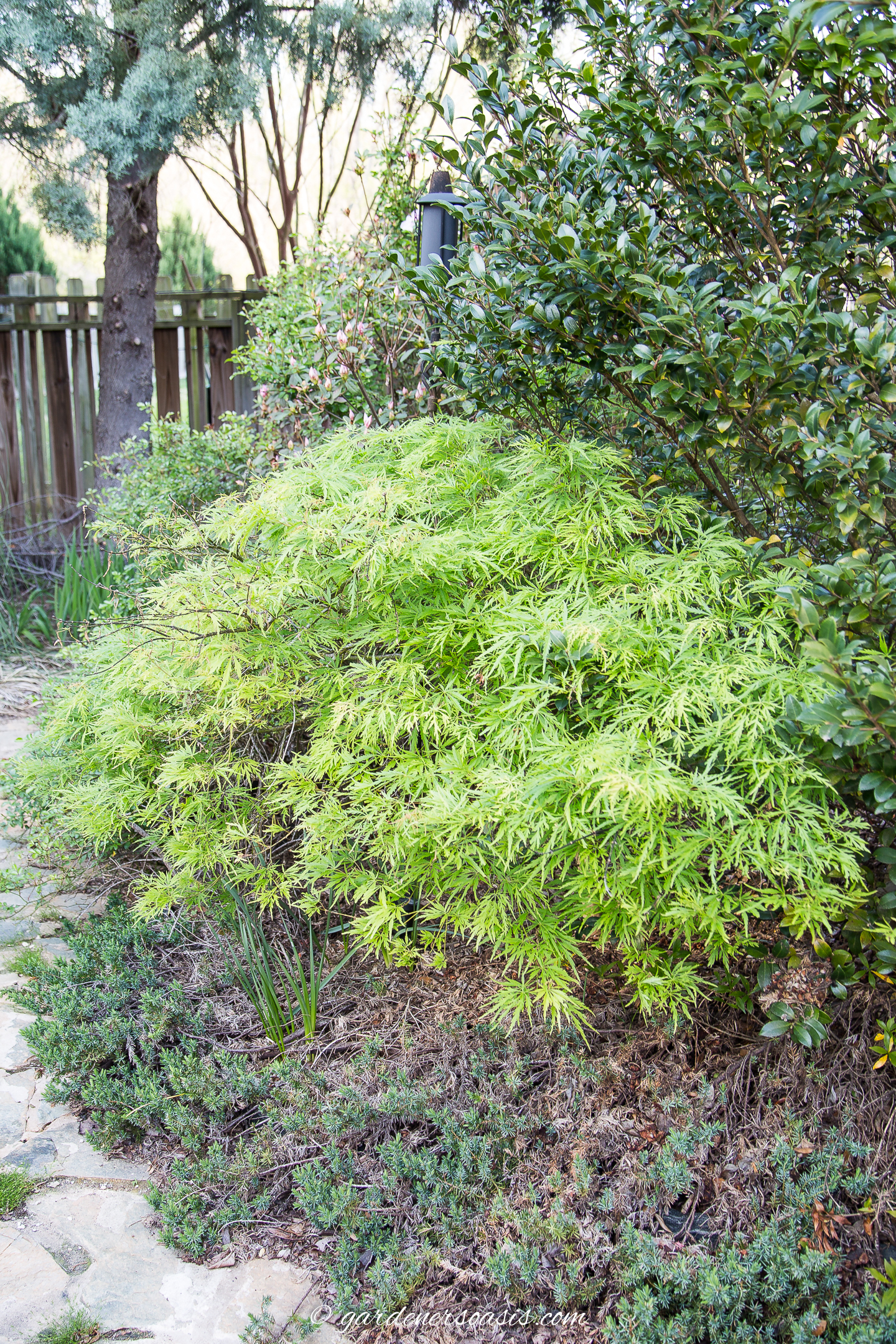
When your Japanese Maple gets old enough to need some shaping, it shouldn’t be pruned in the early spring.
Maple sap runs in the winter, so pruning at that time can cause the wound to ooze sap, which weakens the tree.
The best time to prune them is in July and August.
3 | They Like A Lot Of Mulch
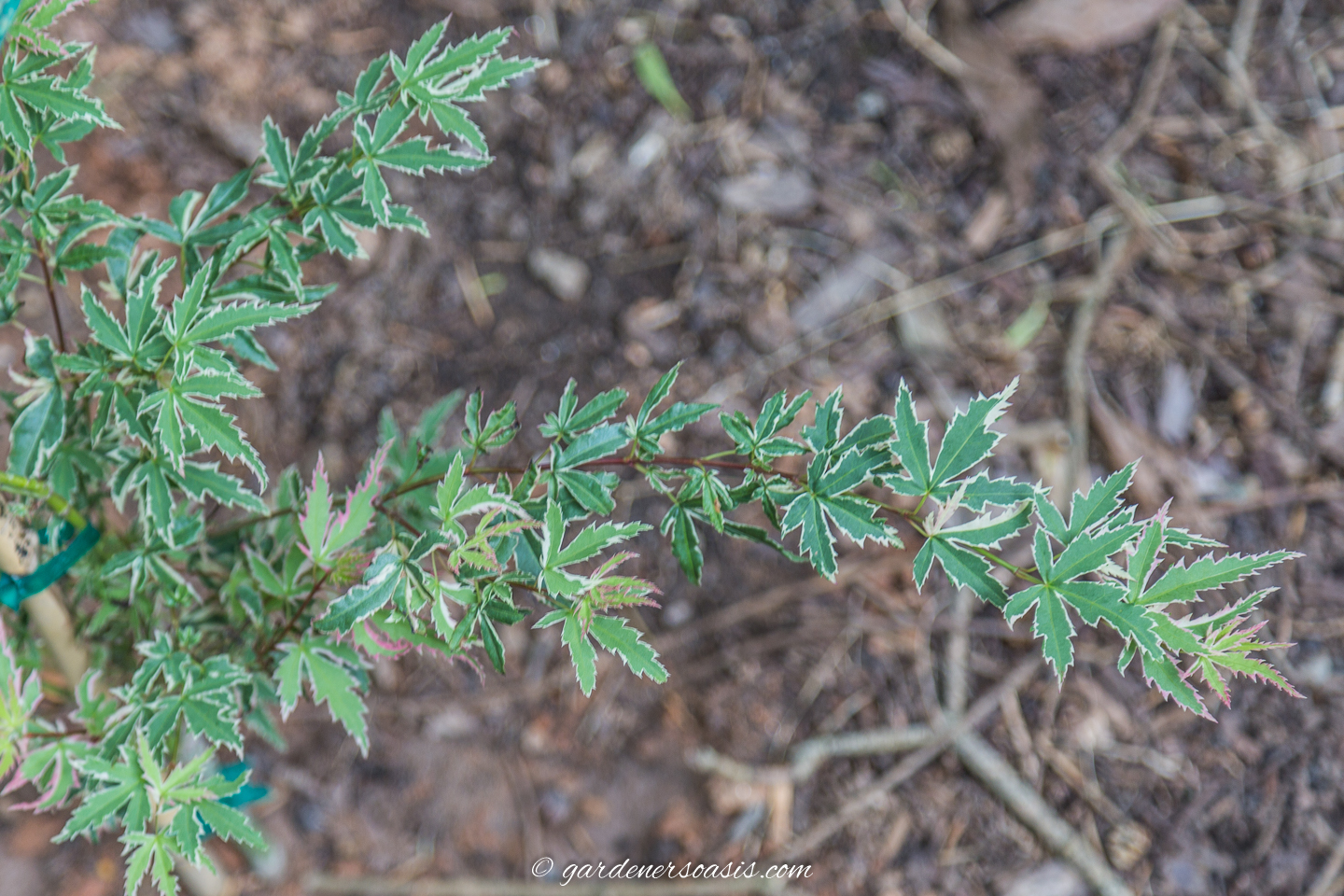
Japanese Maples have a shallow root system, so it gets overheated easily.
And too much sun puts the whole plant under stress and weakens it.
A 6″ thick layer of mulch makes sure this doesn’t happen.
Just keep it away from the trunk of the tree to prevent it from rotting.
4 | Japanese Maples Don’t Need Too Much Fertilizer
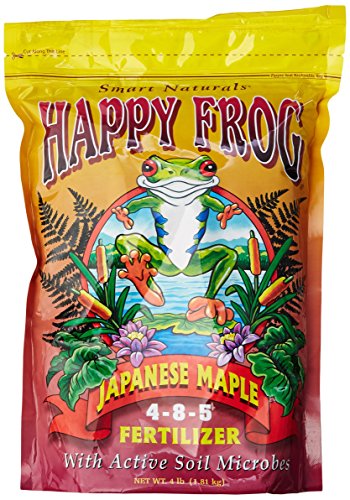
When you first plant a Japanese Maple, resist the urge to add fertilizer.
Too much can actually weaken the plant, cause the stems to die back and invite disease.
Once it has become established, you can add some Japanese Maple fertilizer if you are so inclined.
However, mine do really well without any fertilizer at all. The thick layer of mulch decomposes into the soil and provides enough organic material to keep the plants healthy.
5 | They like shade more than sun
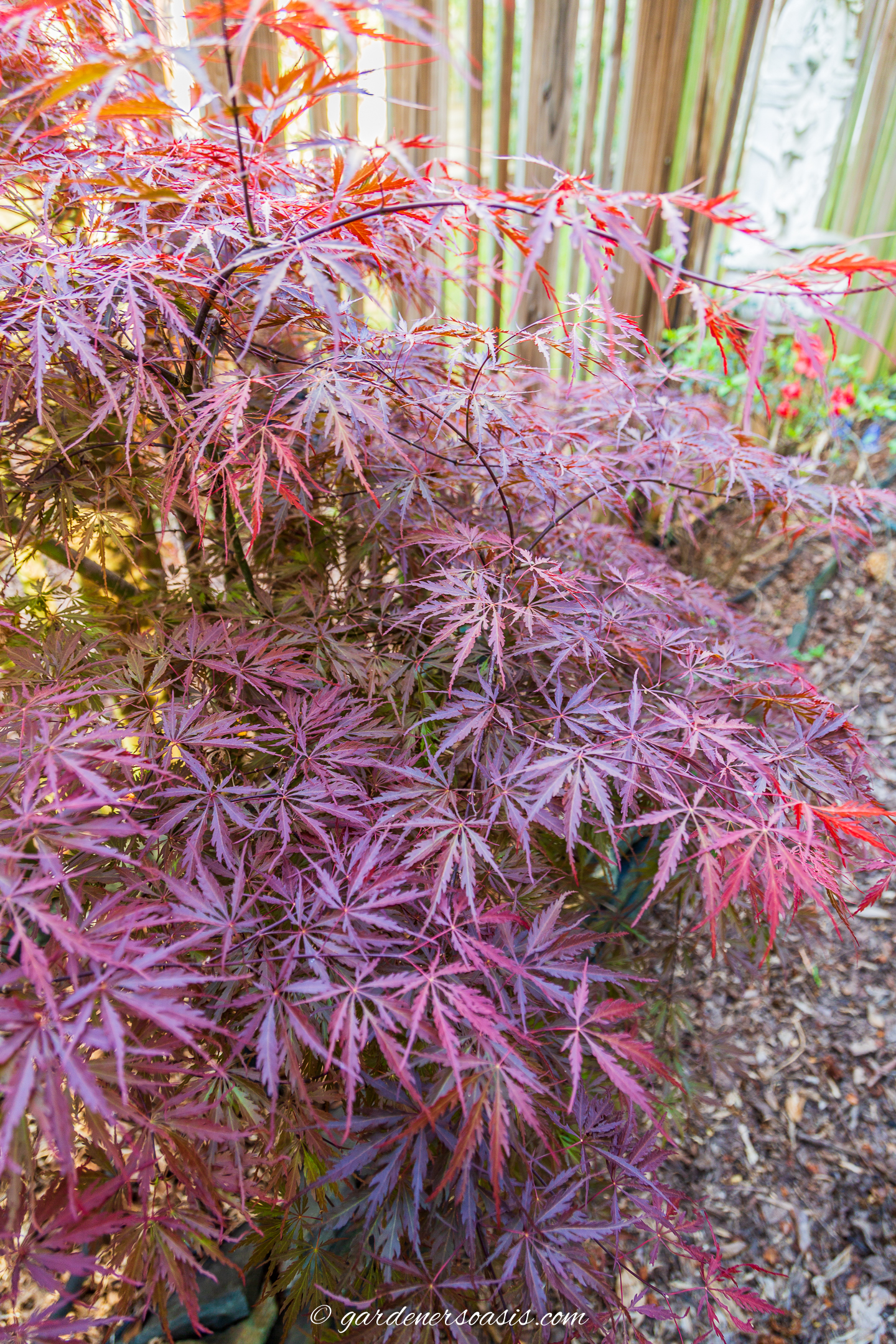
The ideal condition for Japanese Maples is morning sun and afternoon shade.
But if you can’t give them that, they will generally do better with more shade than more sun (especially if you have really hot summers like we do in South Carolina).
Too much sun will cause the leaves to burn and can cause the roots to get too hot.
6 | However, the leaf color is better in some sun
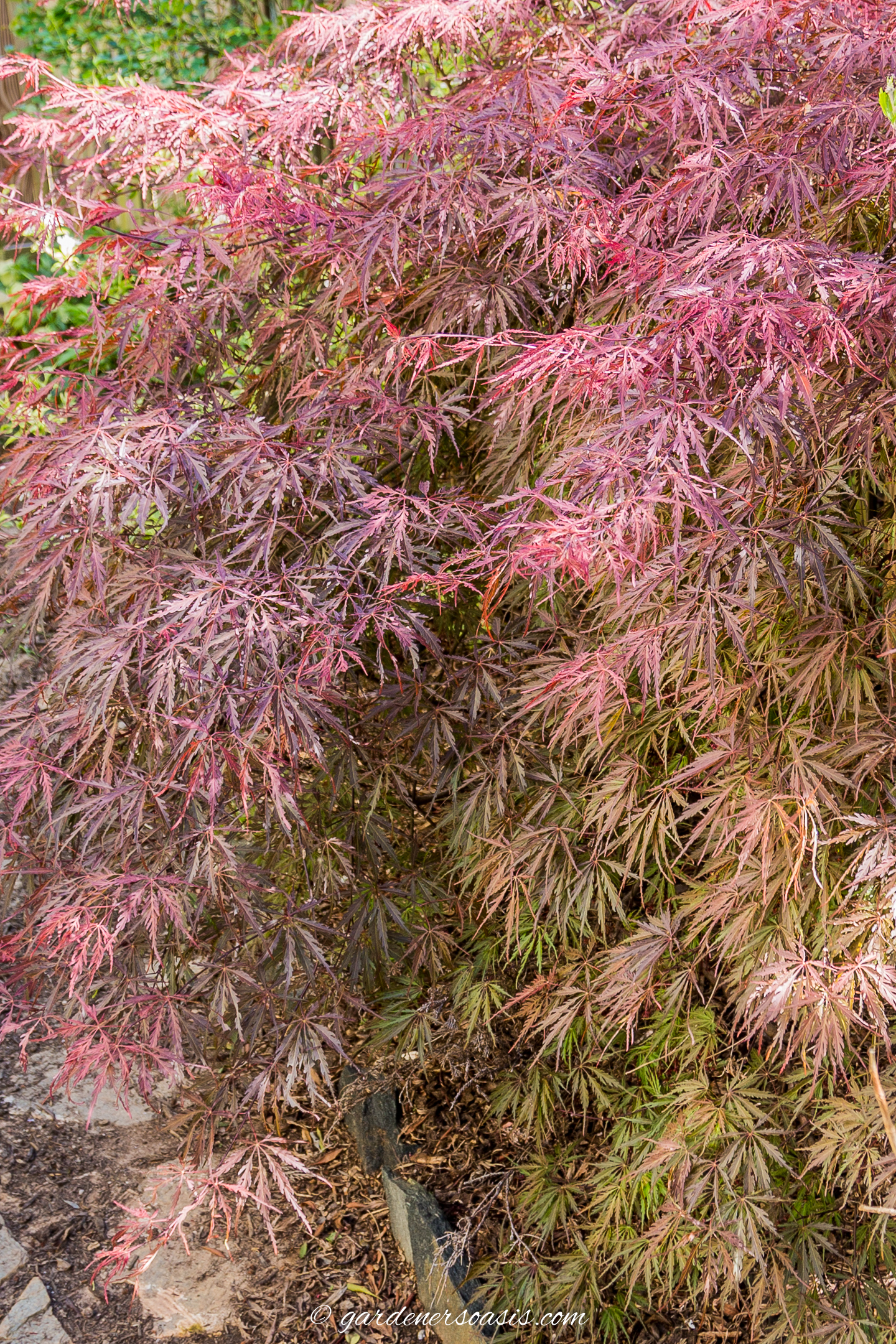
Having just said that Japanese Maples prefer the shade, this sounds a bit odd.
But if you have a Japanese Maple that has red, purple or variegated leaf colors, you will see more of that color if the tree has a little more sun.
You can see this easily in established trees (like the one in the picture), where the leaves on the top (that are exposed to more sun) are red, while the ones underneath are green.
7 | Japanese Maples grow well in small containers
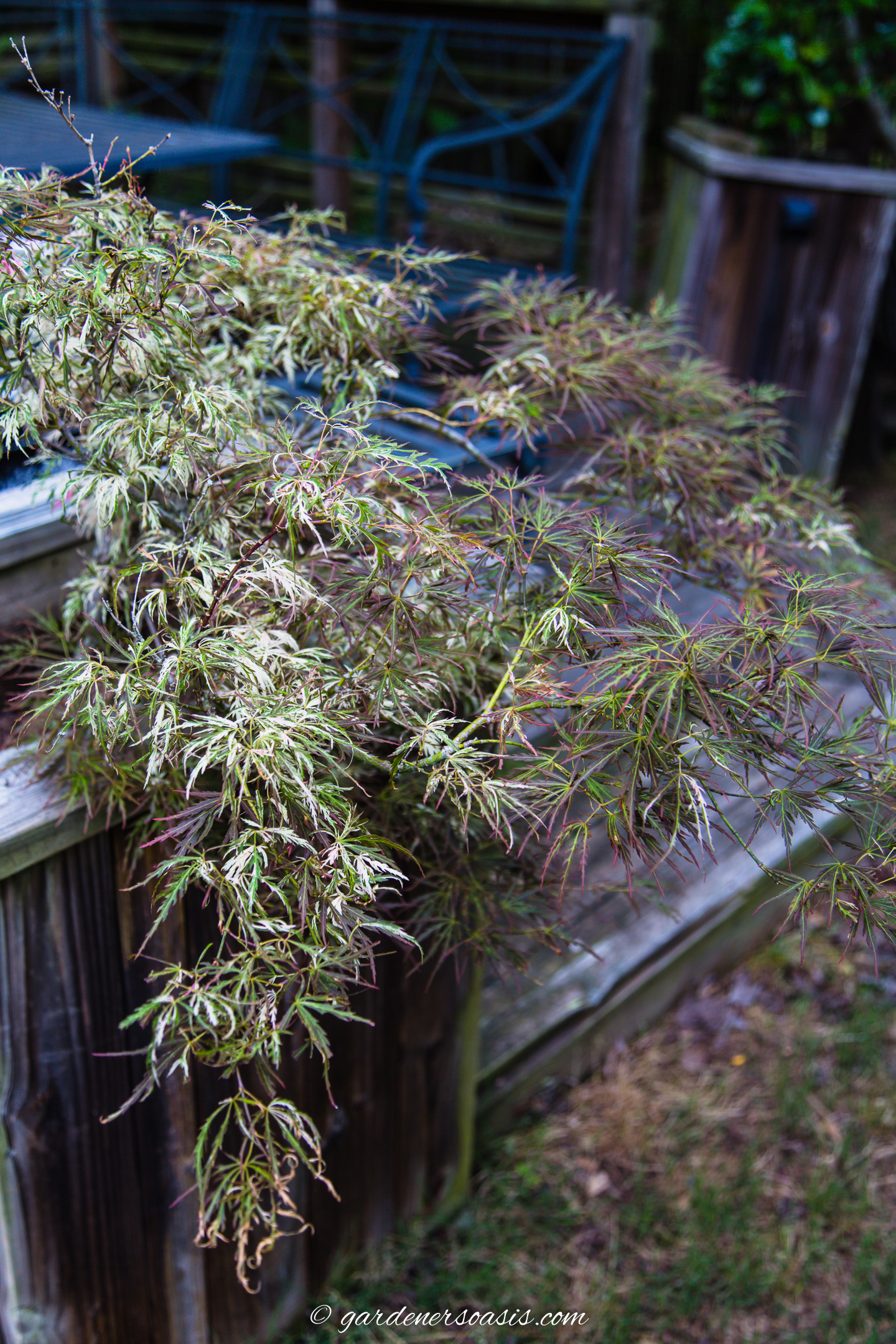
Because they are slow growing, a lot of Japanese Maples do quite well in containers.
And they actually seem to flourish in smaller containers better than larger ones.
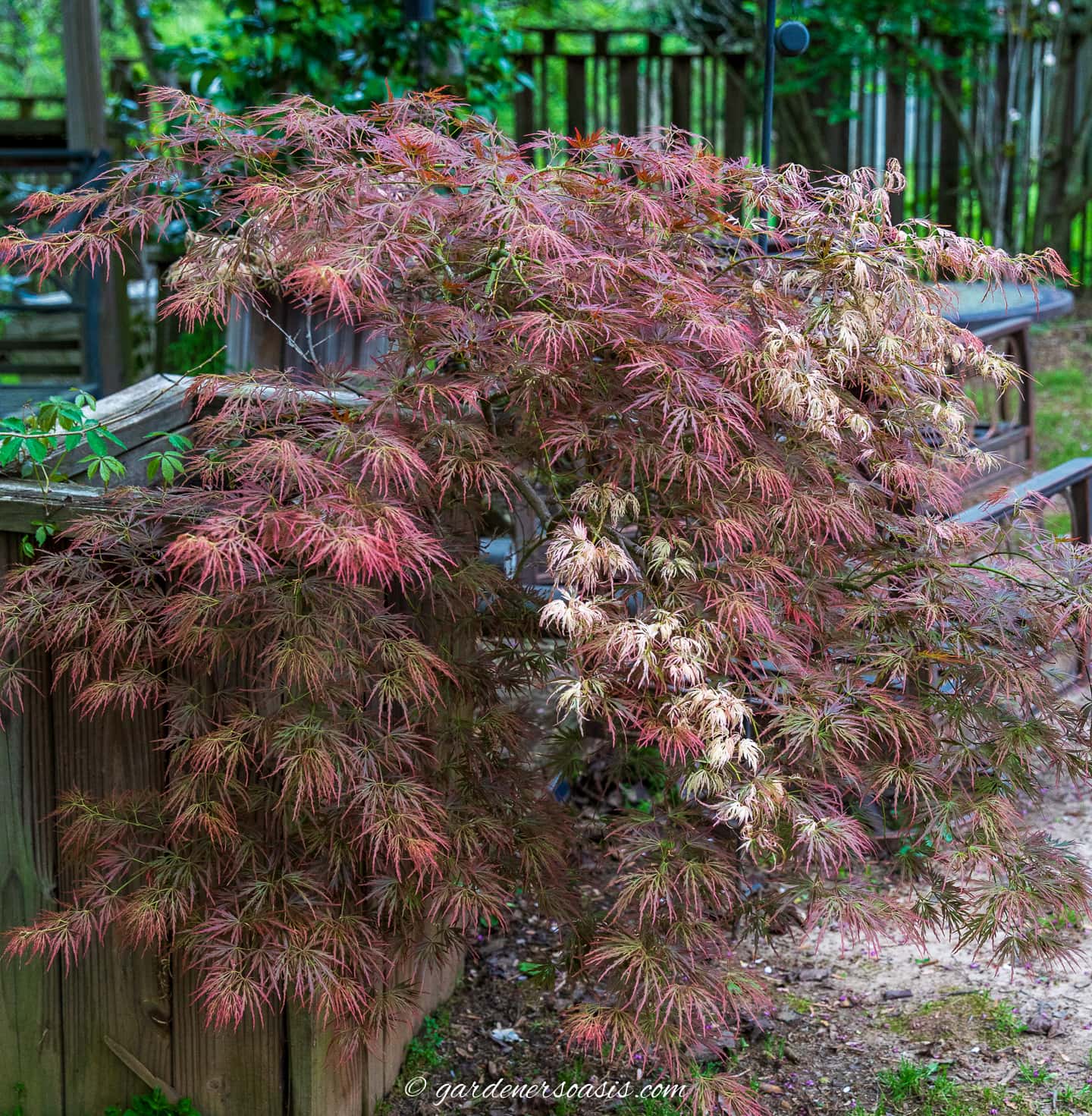
For the best success, try to use a planter that is no more than twice the width of the rootball.
If you live in a colder climate and plan to keep the container outside all year, you may need to insulate it to protect the roots. Lining the inside with styrofoam works quite well.
Also, don’t use ceramic containers for this as they will crack if they freeze.
8 | The plants provided all season interest
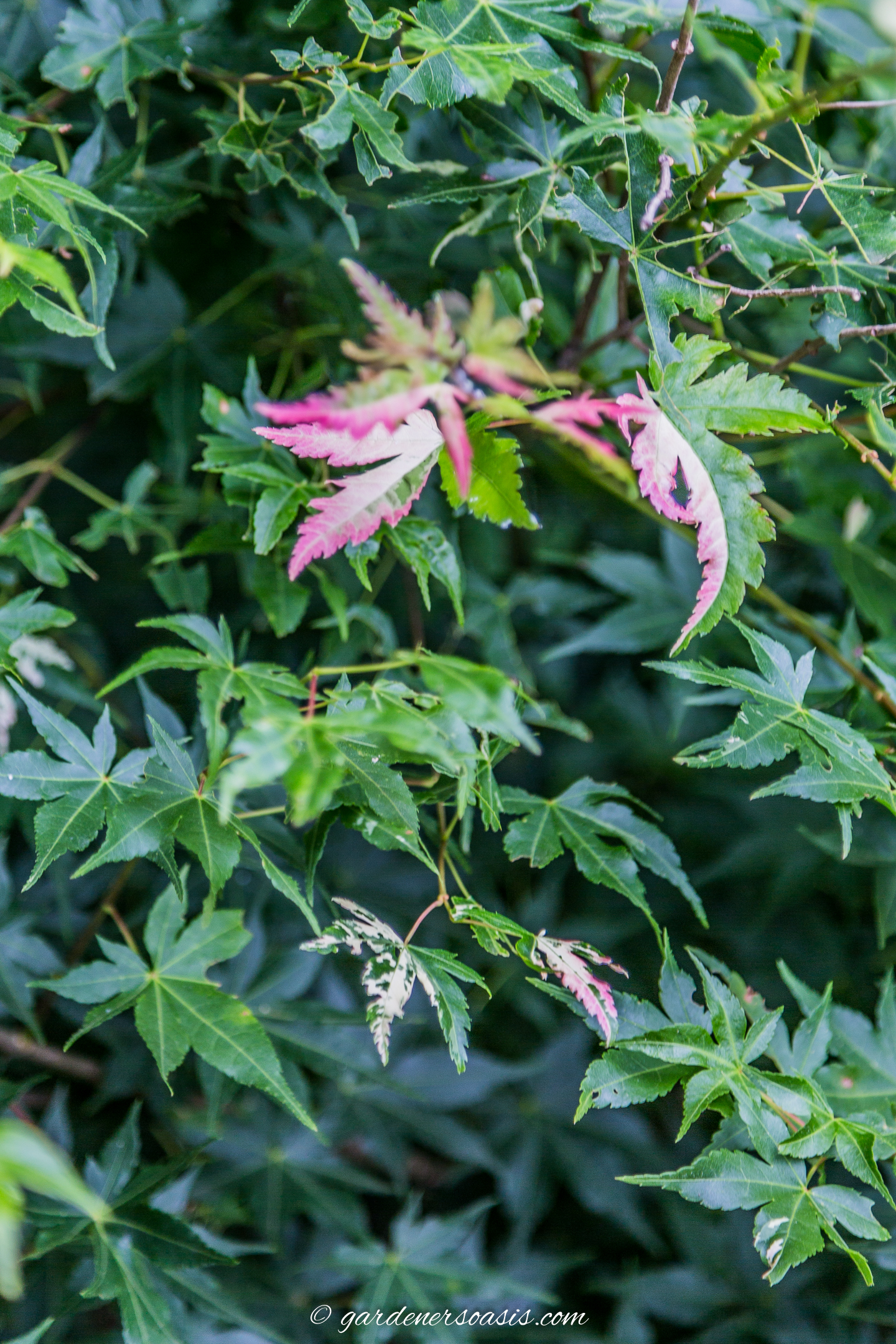
It’s actually pretty amazing how many different colors you can find in Japanese Maple leaves. Pretty much all of them except blue.
Like the pink and white variegated leaves of Acer Palmatum ‘Oridono Nishiki’ (above).
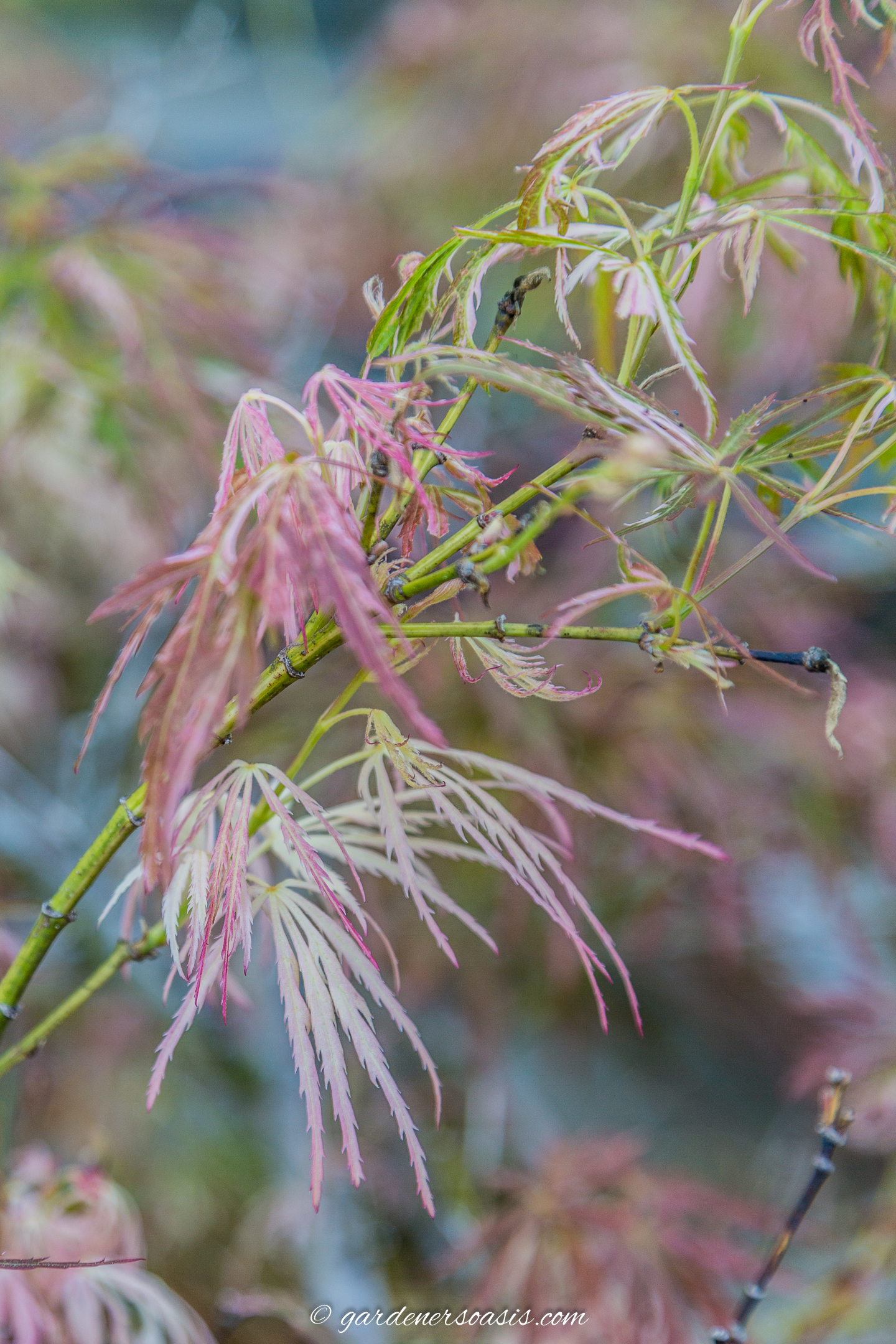
Even better? They can add interest all year long.
In the spring, the leaves often come out in a different color than the mature leaves.
The variety in the picture above (Acer Palamtum ‘Toyama Nishiki’) starts out with white leaves that turn to pink and then red before going green.
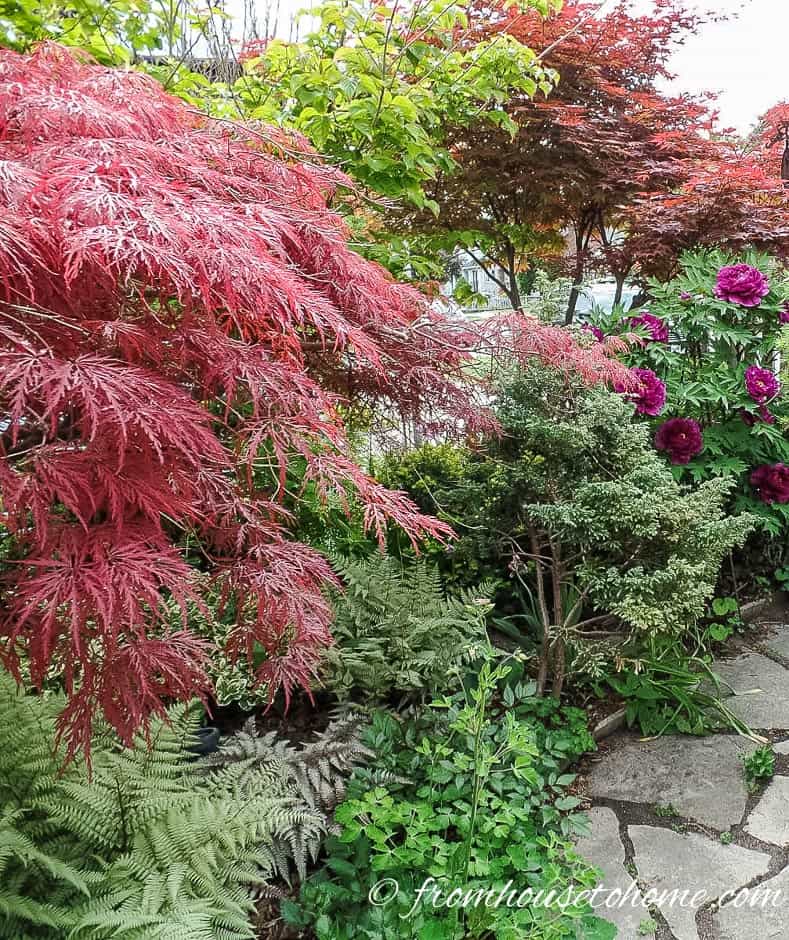
In the summer, the shape of the leaves and the gracefulness of the tree is a focal point in the garden.

In the fall, the bright red leaves are a show stopper.
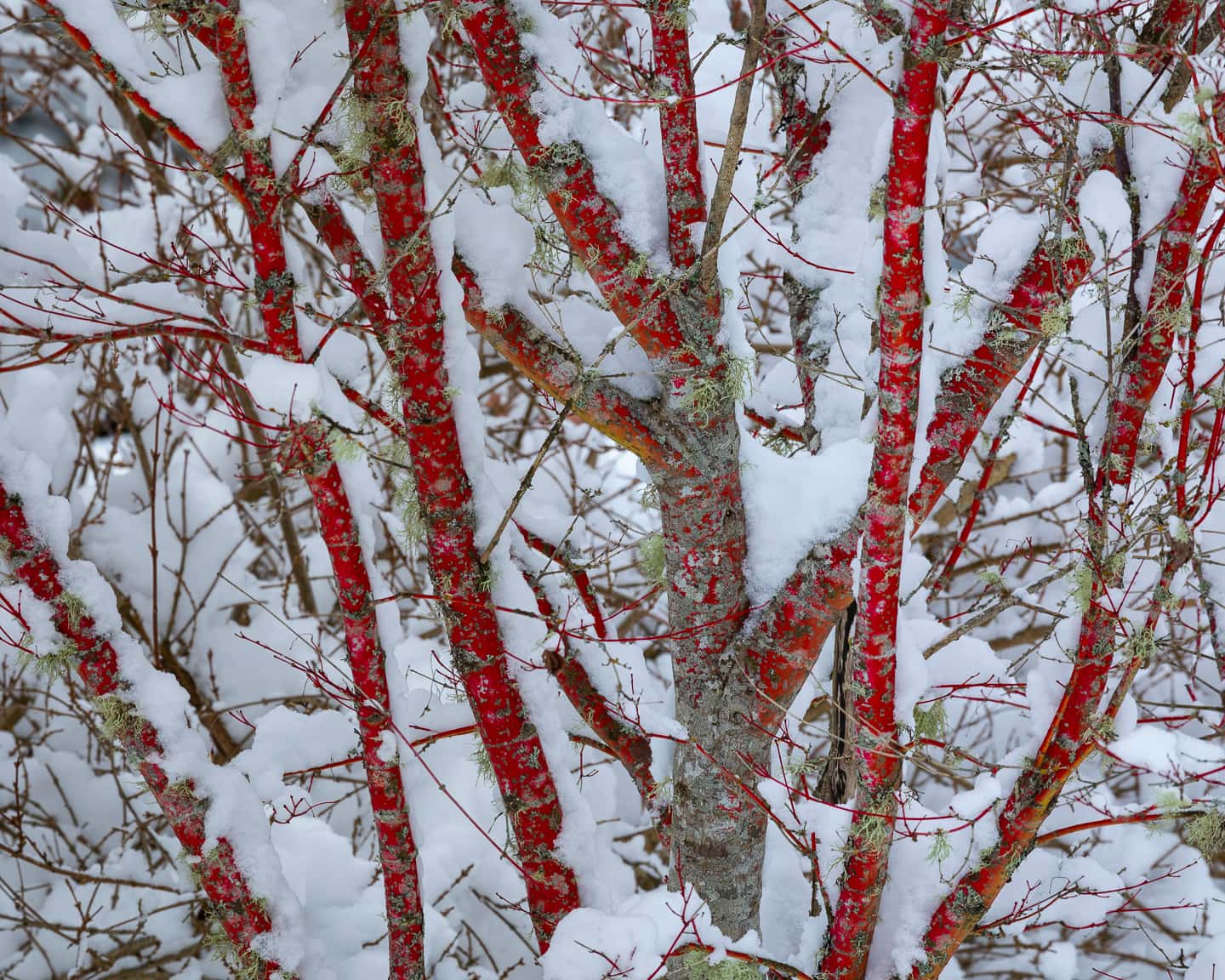
And in the winter, the interesting shape of the trunk will provide some structure.
9 | They will get bigger than you think
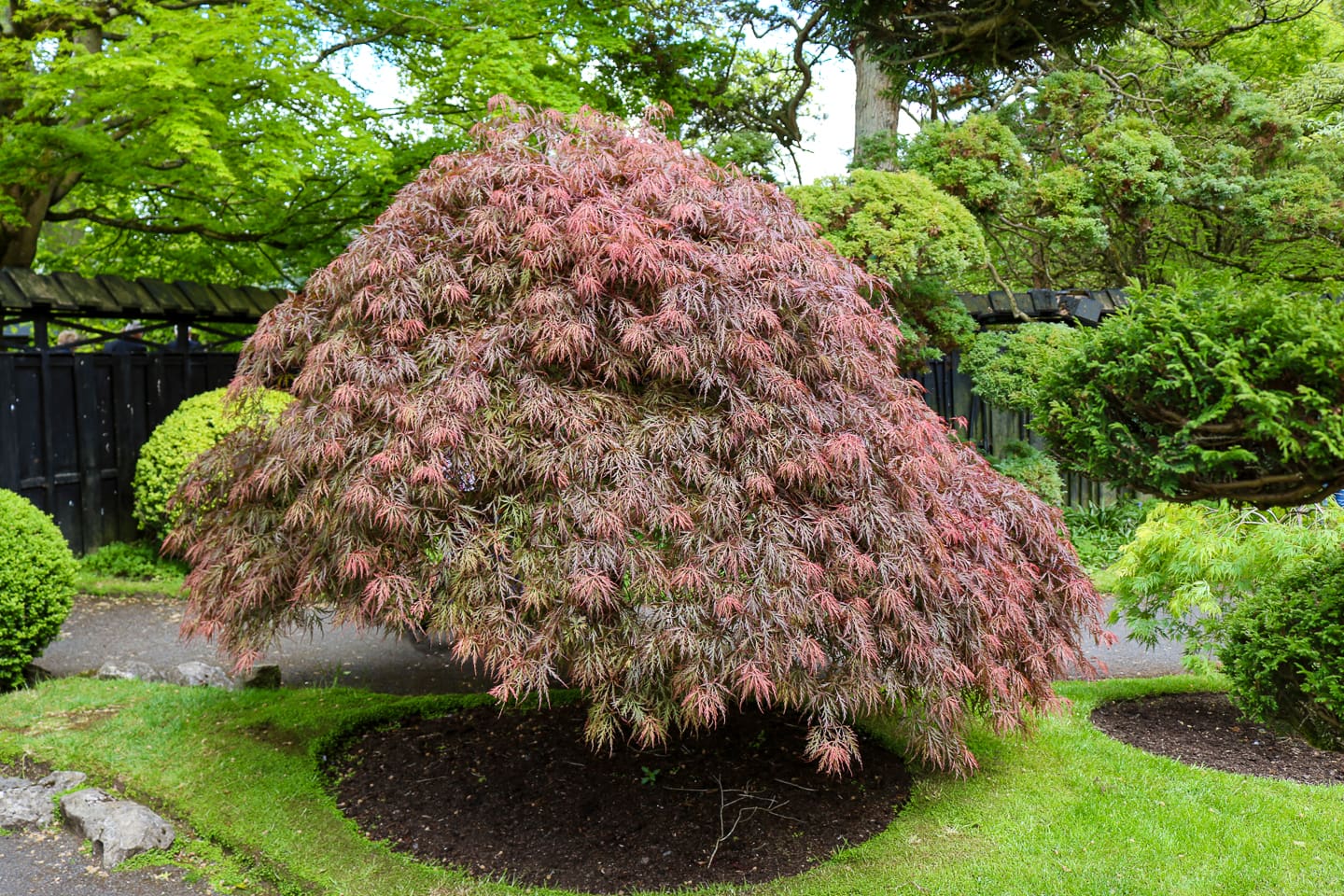
Japanese Maples are very slow growing trees.
Which is why they are usually quite expensive if you want to buy one that is a decent size.
So if you’re like me, you buy them when they’re small, plant them in your garden and then fill up the space around them because it looks too bare.
Just know that some day, you’ll be moving all those other plants out of the way.
Most Japanese Maples will grow to be at least 8 feet tall and wide (and some as tall as 25 feet depending on the variety).
10 | They look really good with landscape lighting
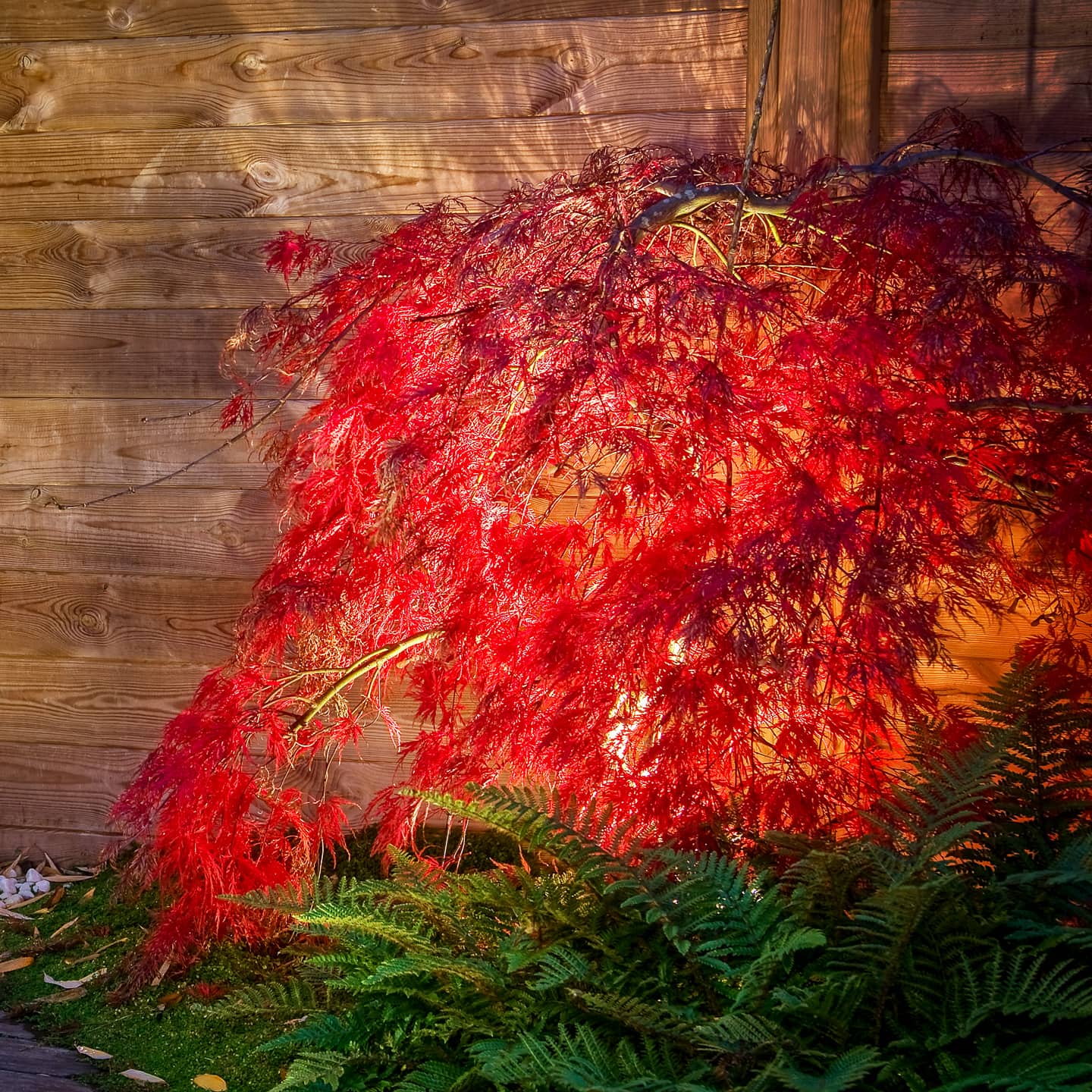
Because Japanese Maples often have interesting trunk structures and lacy leaves, they make really good focal points at night with some landscape lighting.
Point an uplight along the stem and into the canopy, and you are pretty much guaranteed to have a stunning lighting effect.
Where to find Japanese Maples
Here are a few of my favorite online nurseries for buying Japanese Maples:
- Fast Growing Trees* – As the name suggests, this nursery specializes in trees. They carry many of the most popular Japanese Maples and have good quality plants that are well packed for shipping.
- Planting Tree* – Another good quality online-only nursery that ships all kinds of plants, including many of the most popular Japanese Maples.
- Mendocino Maples Nursery – This nursery specializes only in Japanese Maples, so they carry many varieties that you can’t find anywhere else.
Other gardening ideas you might like
Have questions or suggestions on growing Japanese Maples? Tell us in the section below.
Pin It So You Don't Forget It!
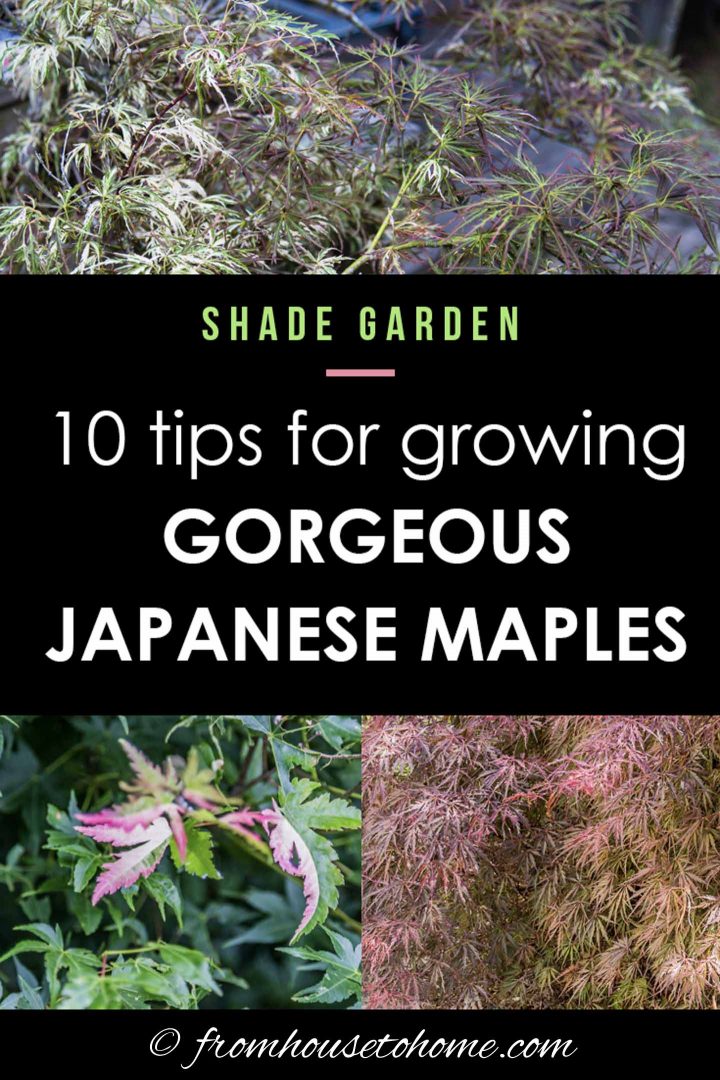
This post was originally published on April 11, 2017 but was updated with new content on December 30, 2023.

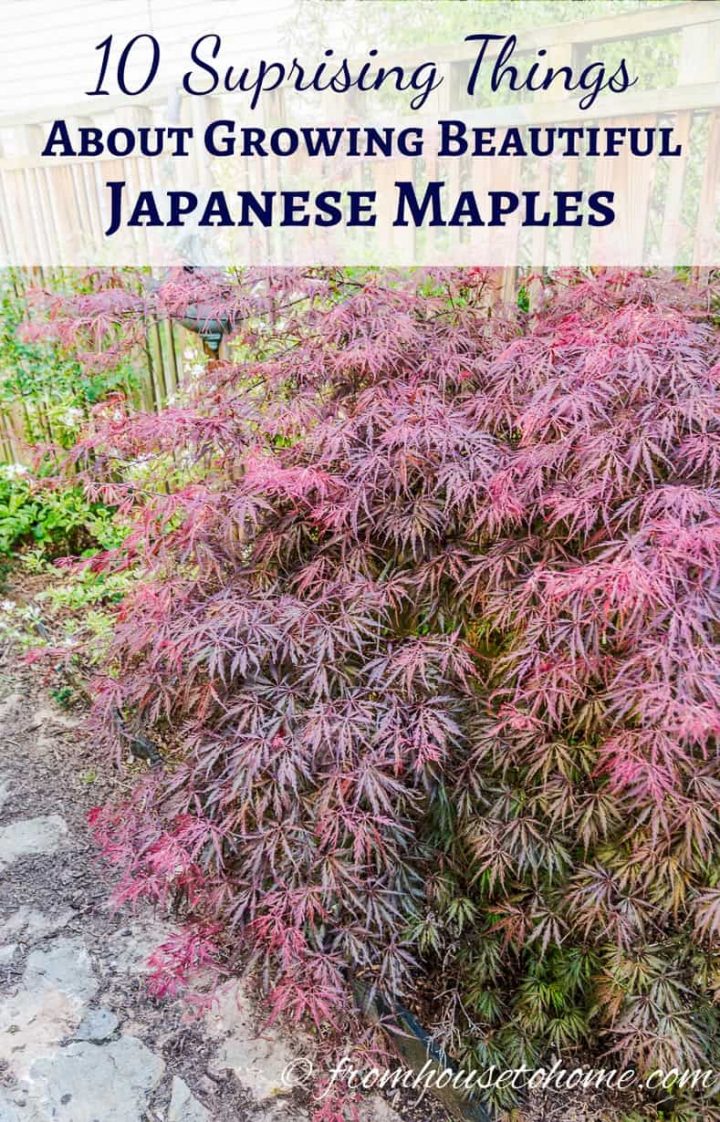
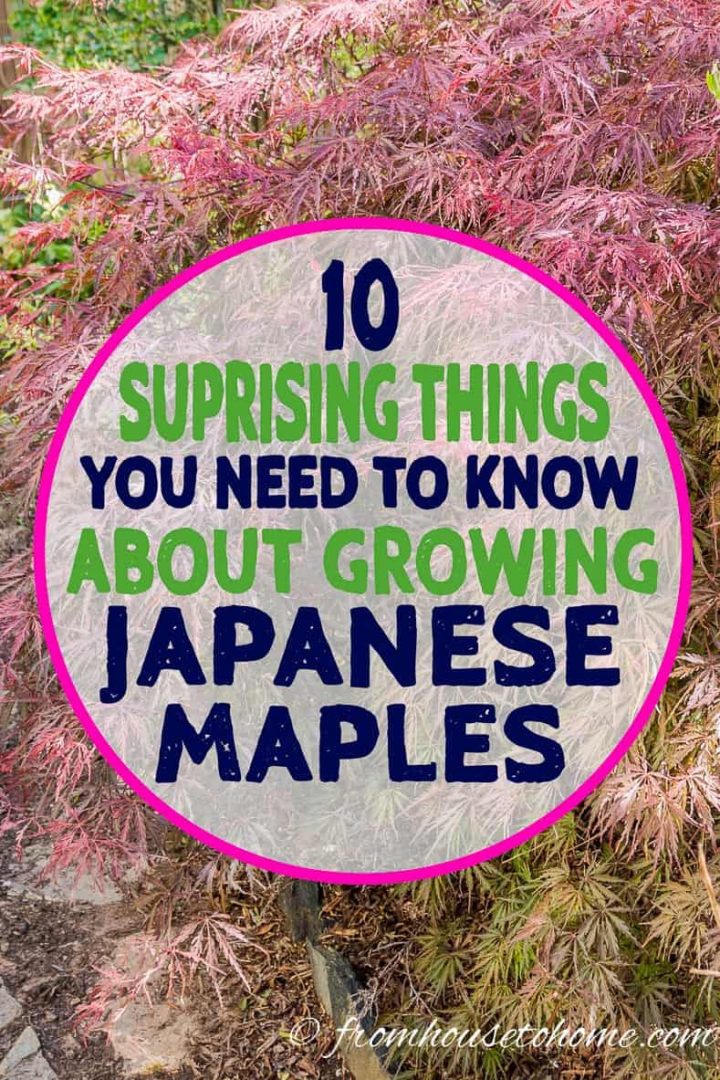

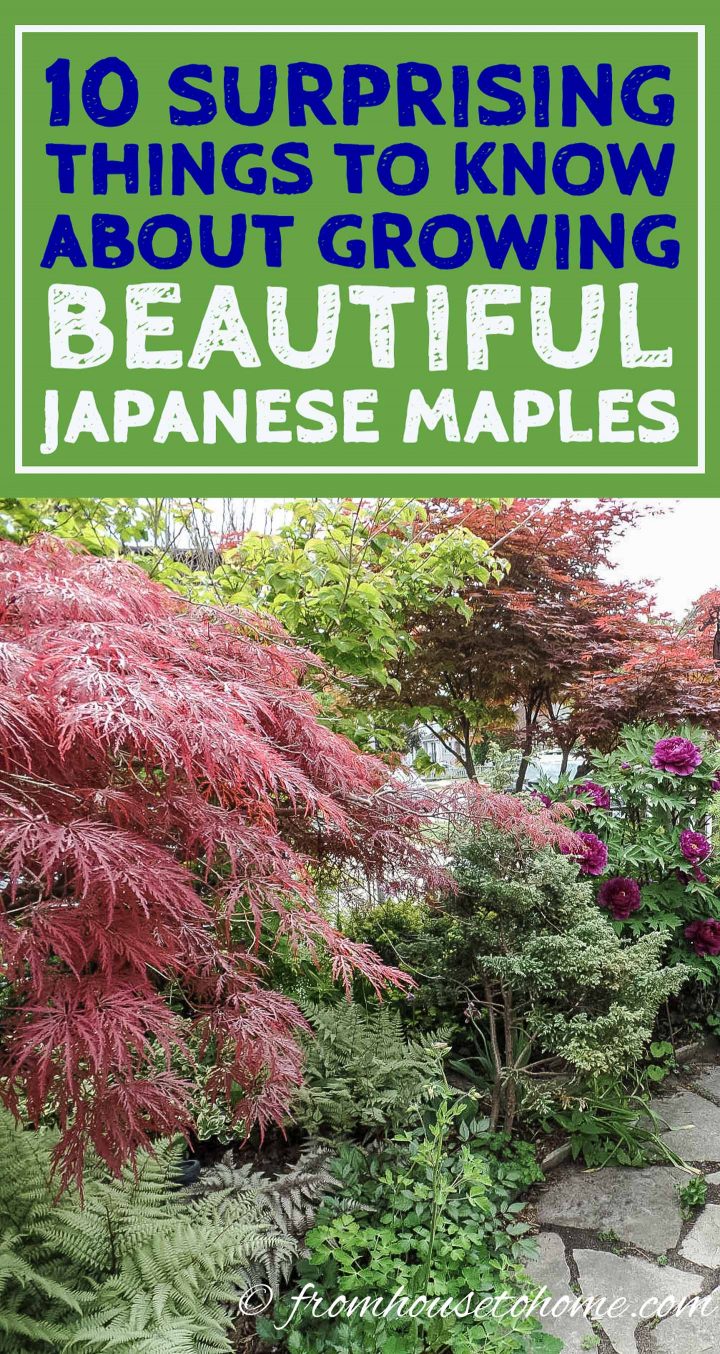
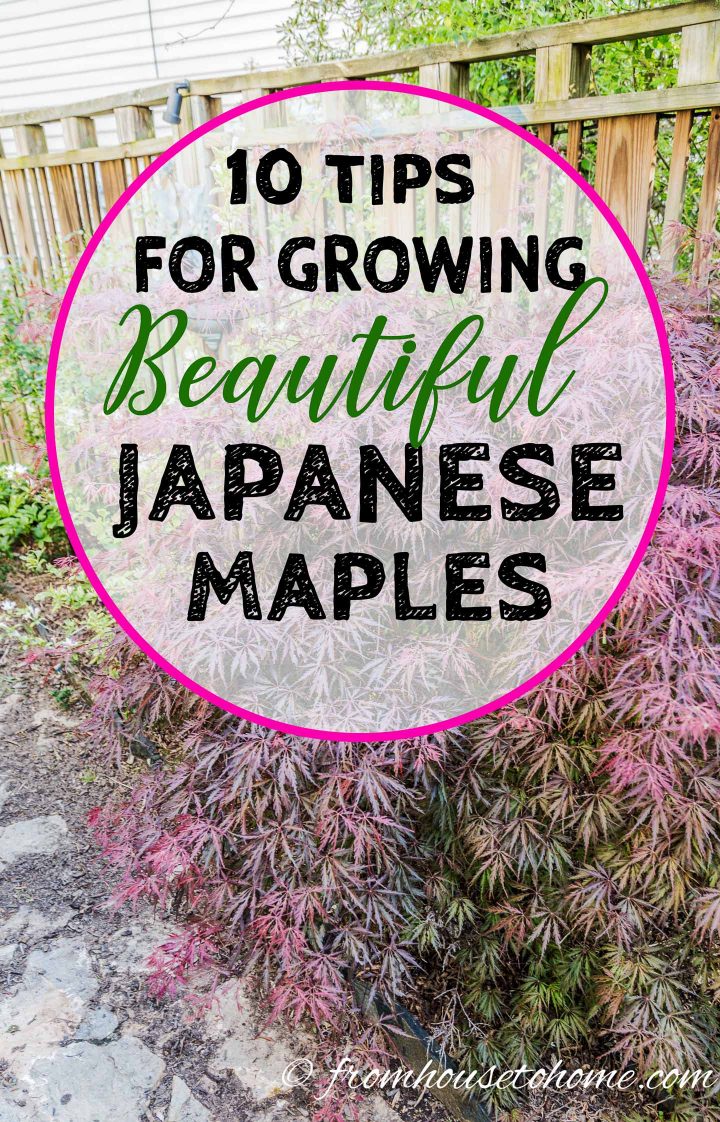
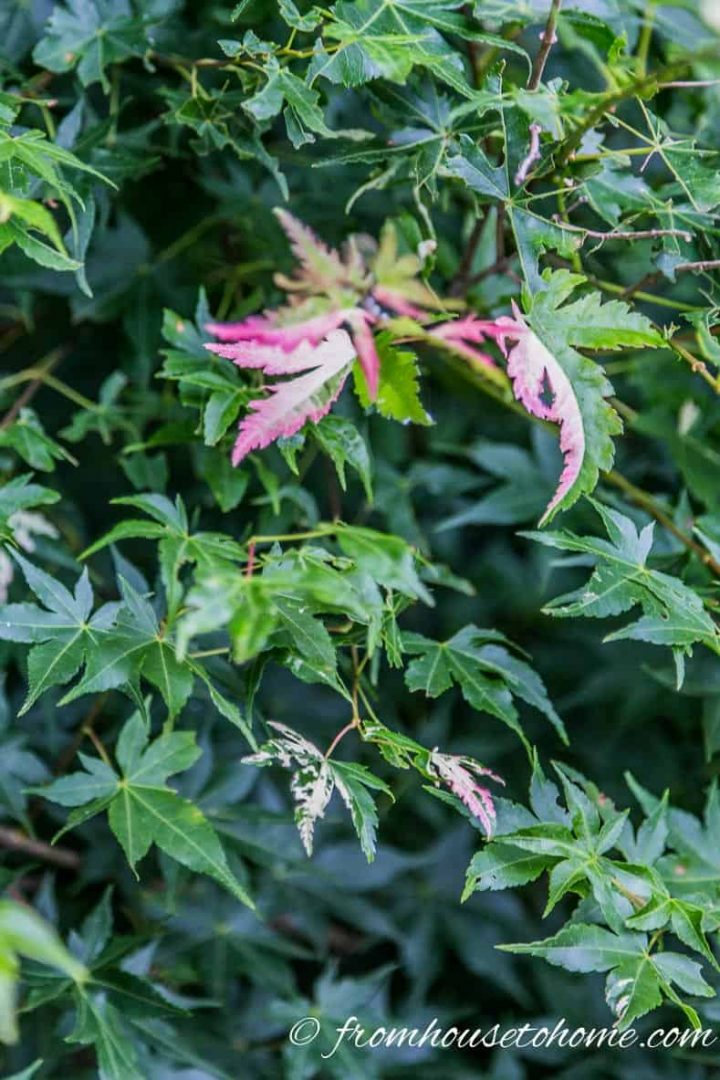
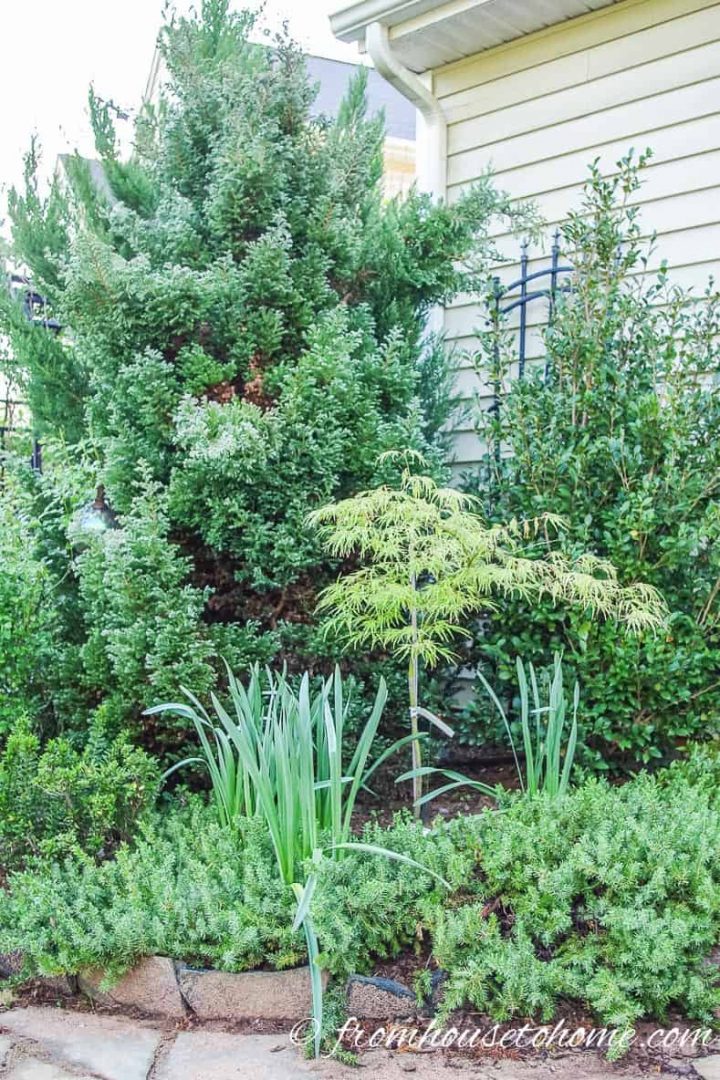
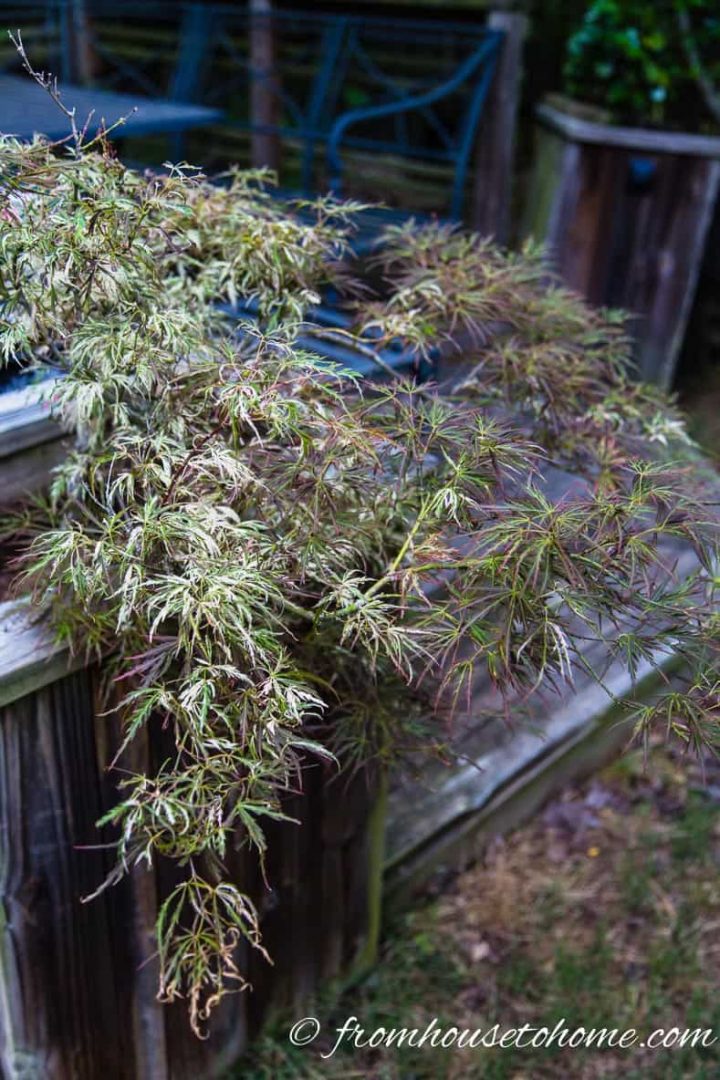
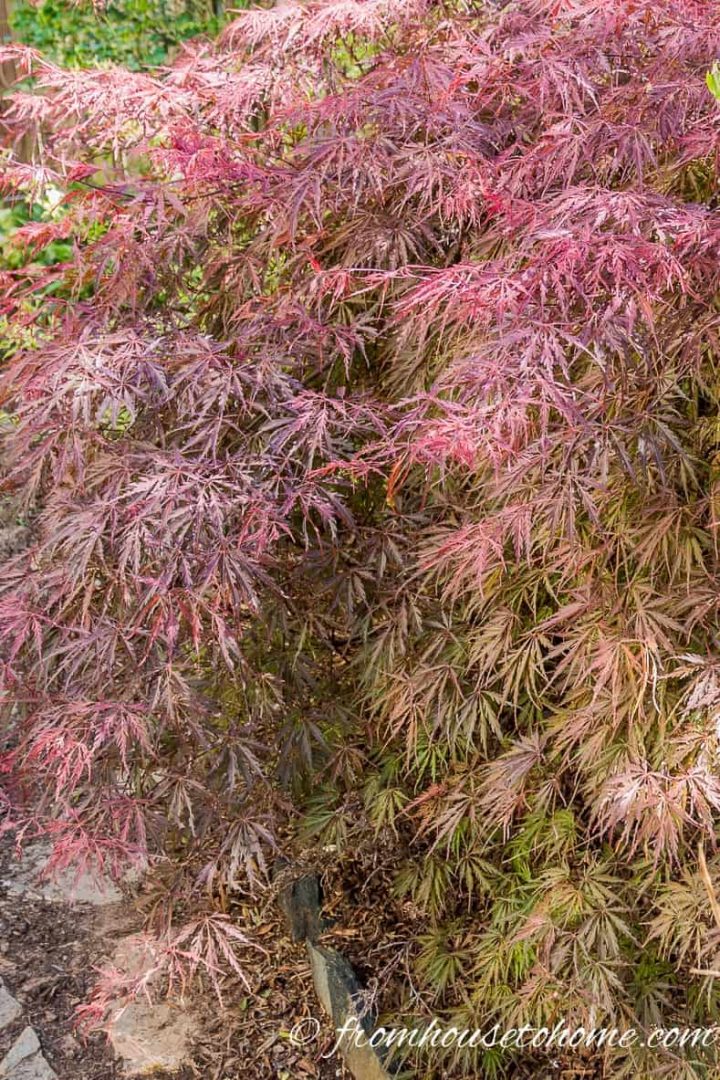
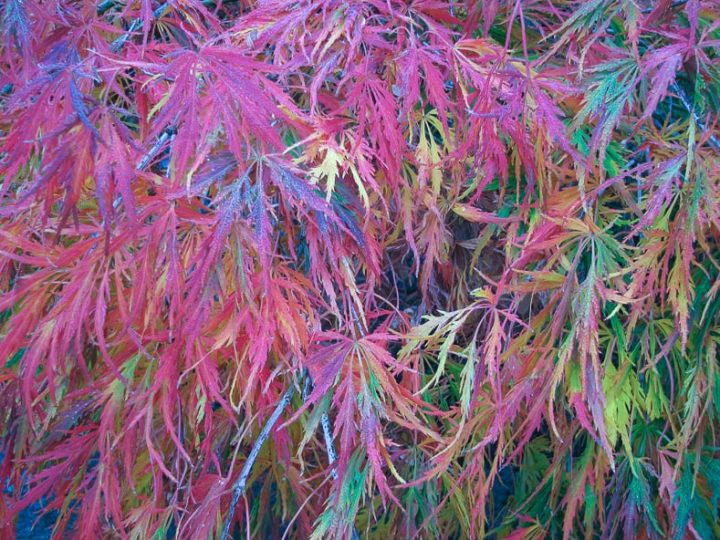
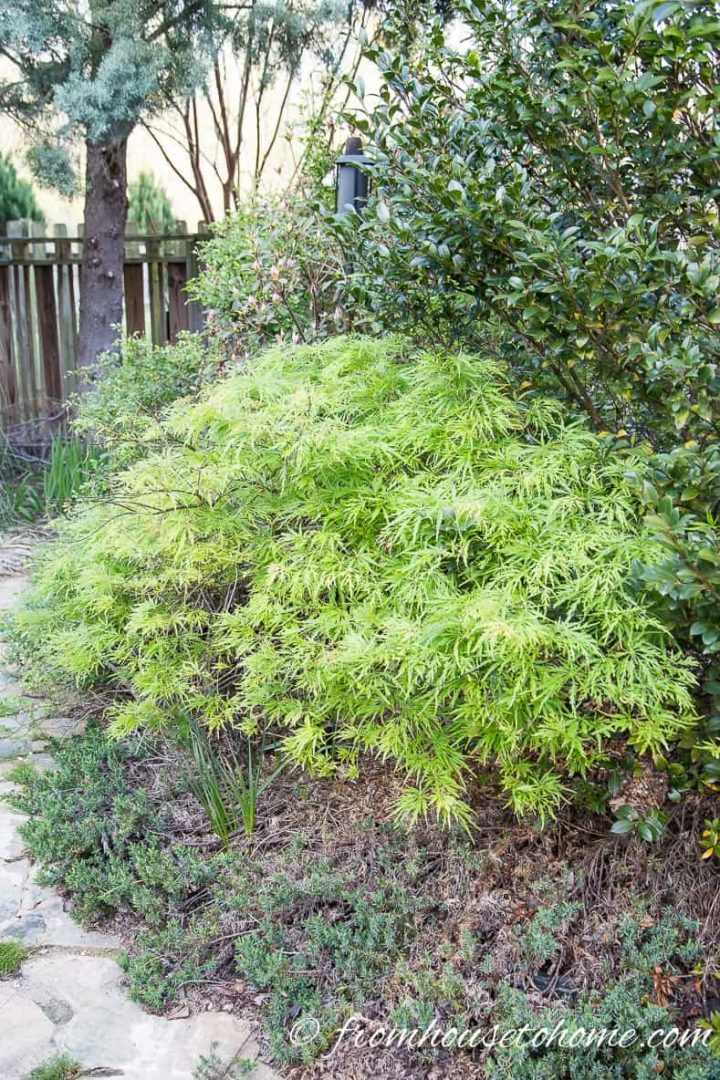
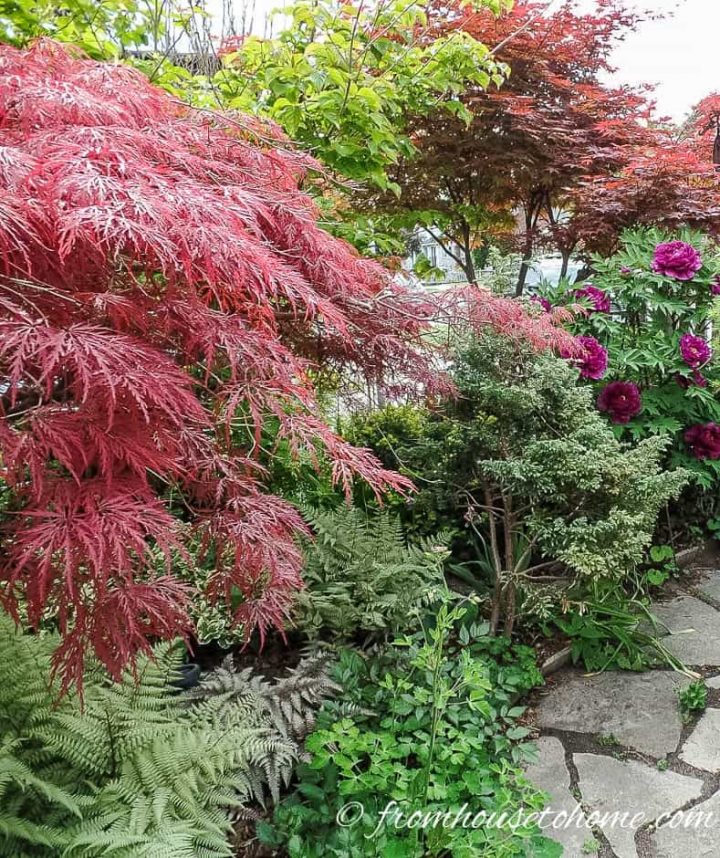
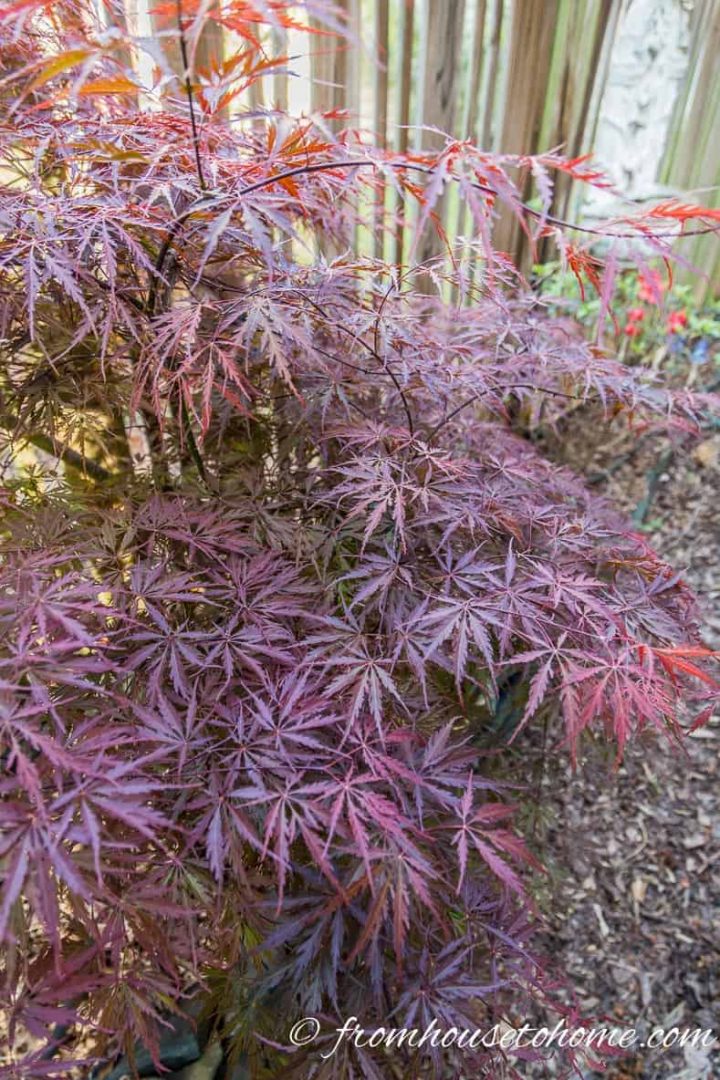
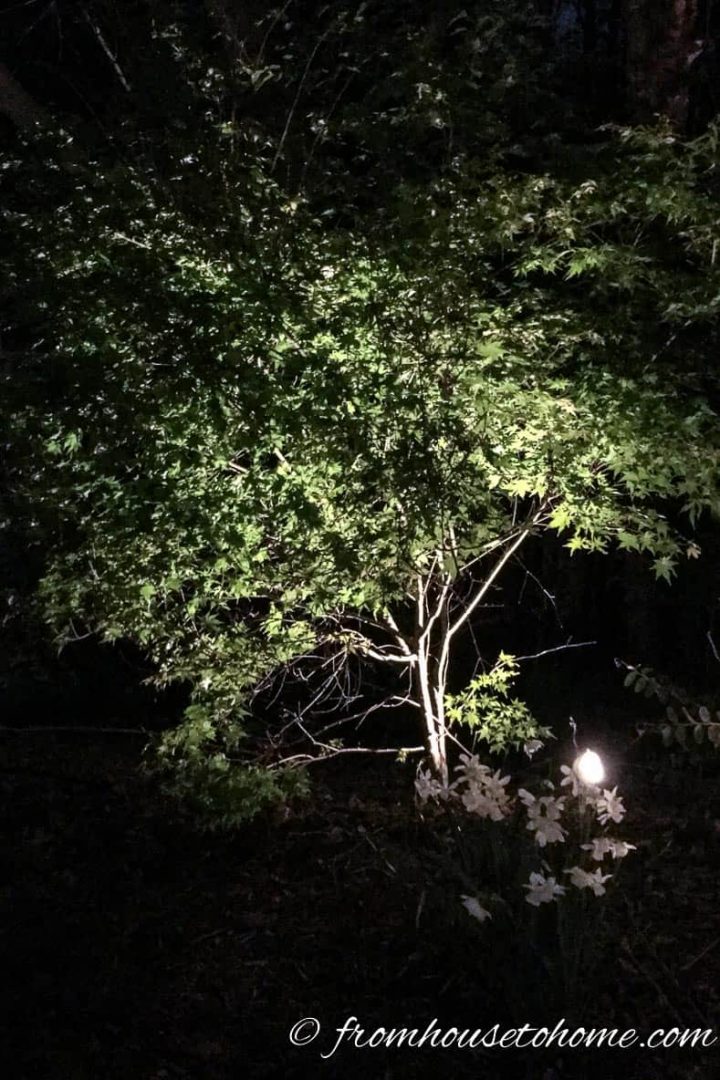
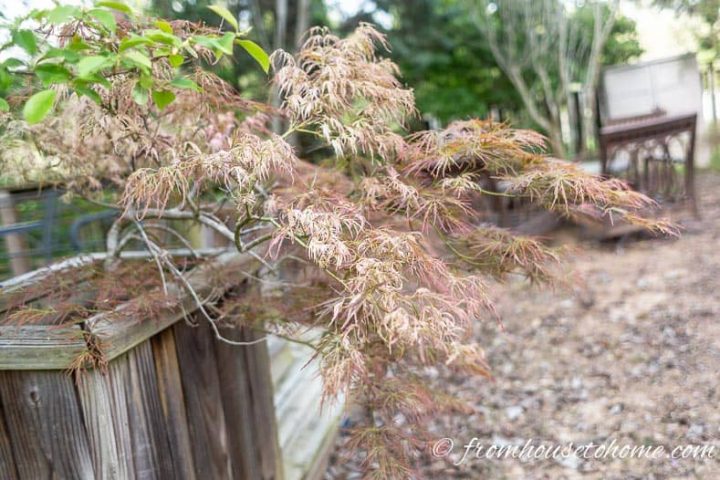
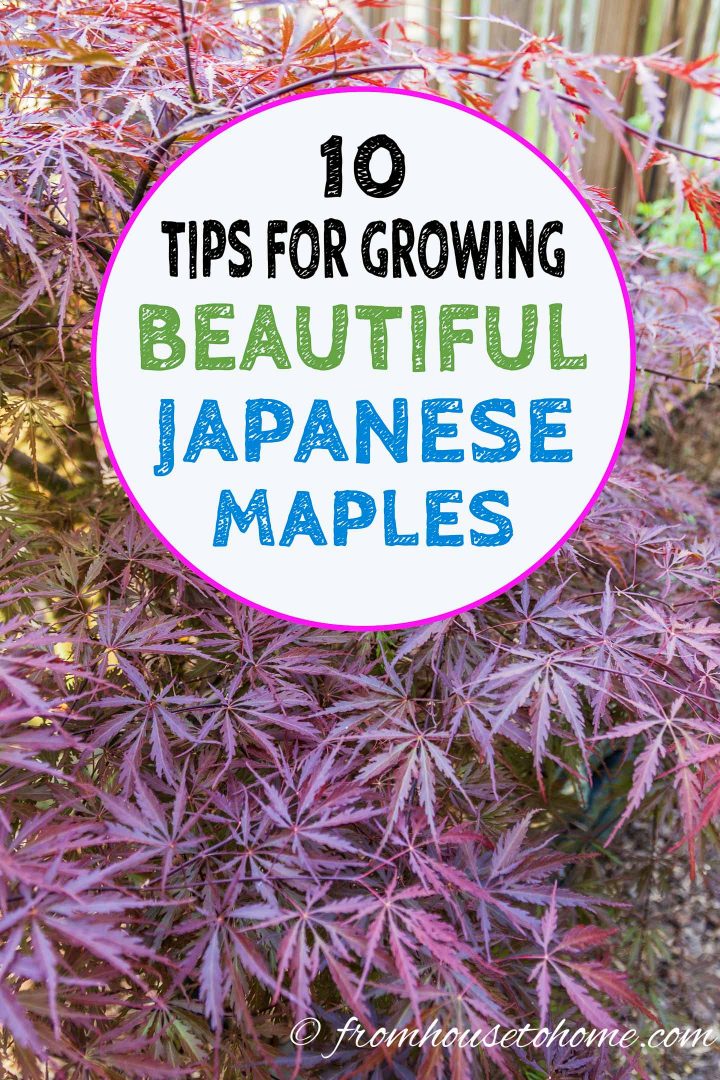

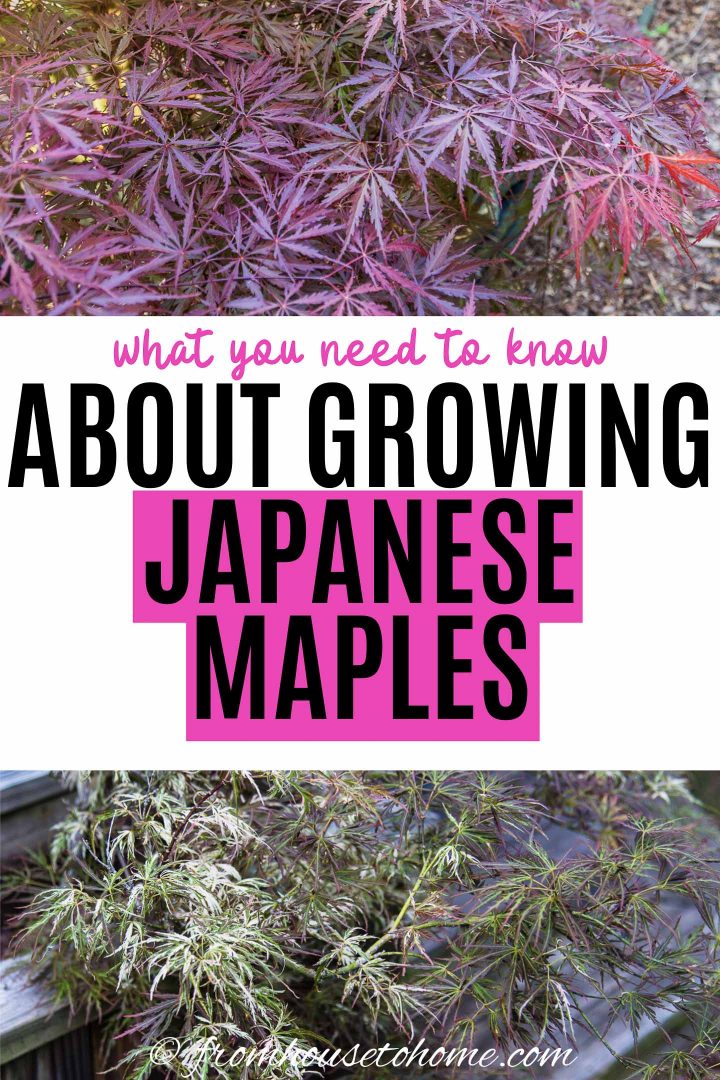
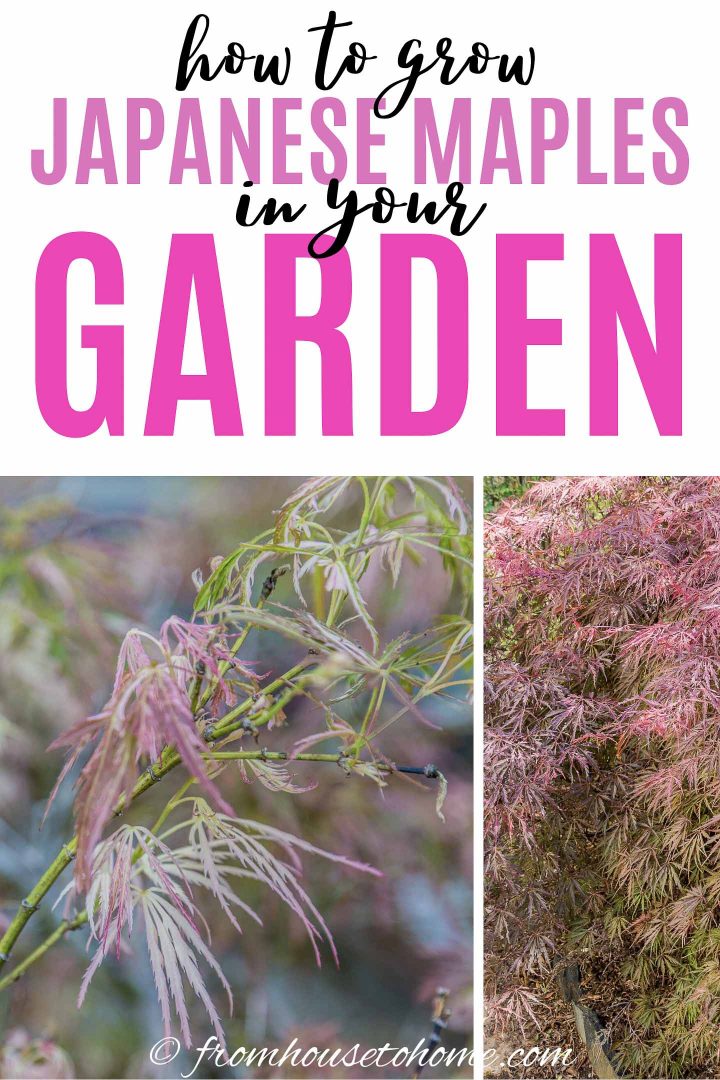
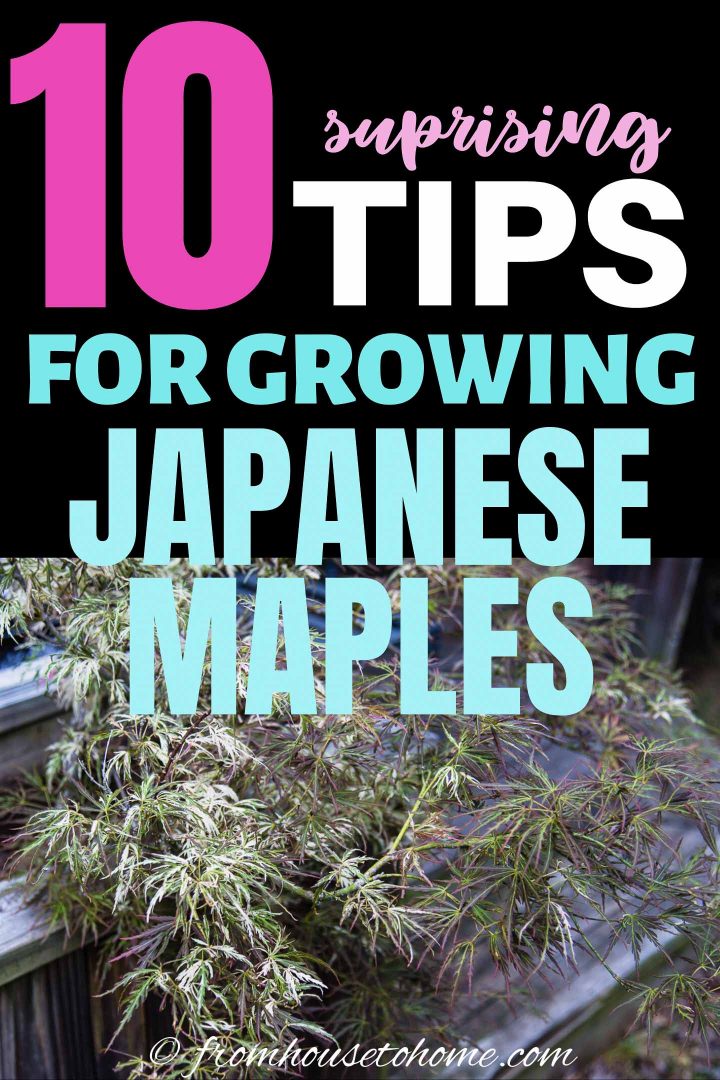
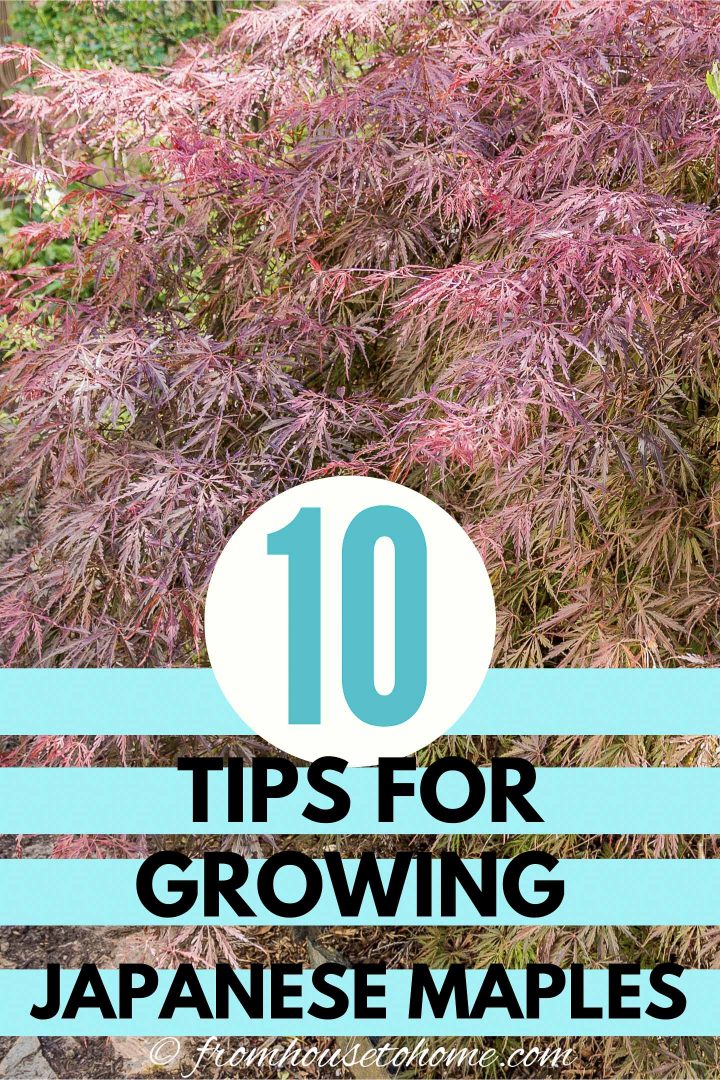
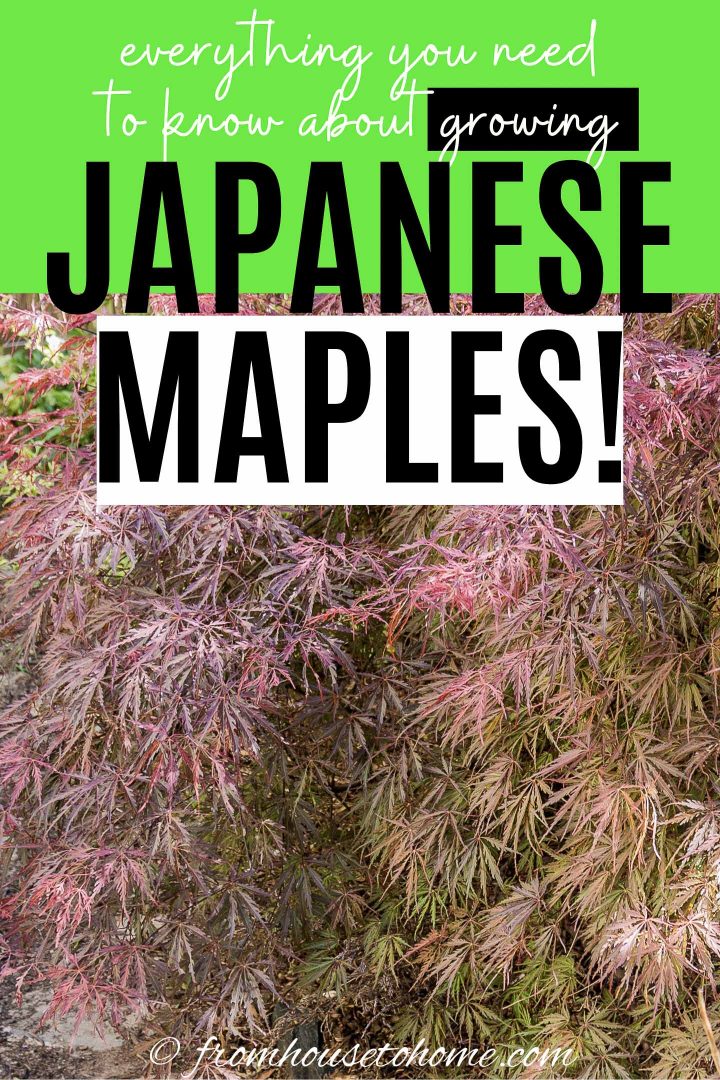
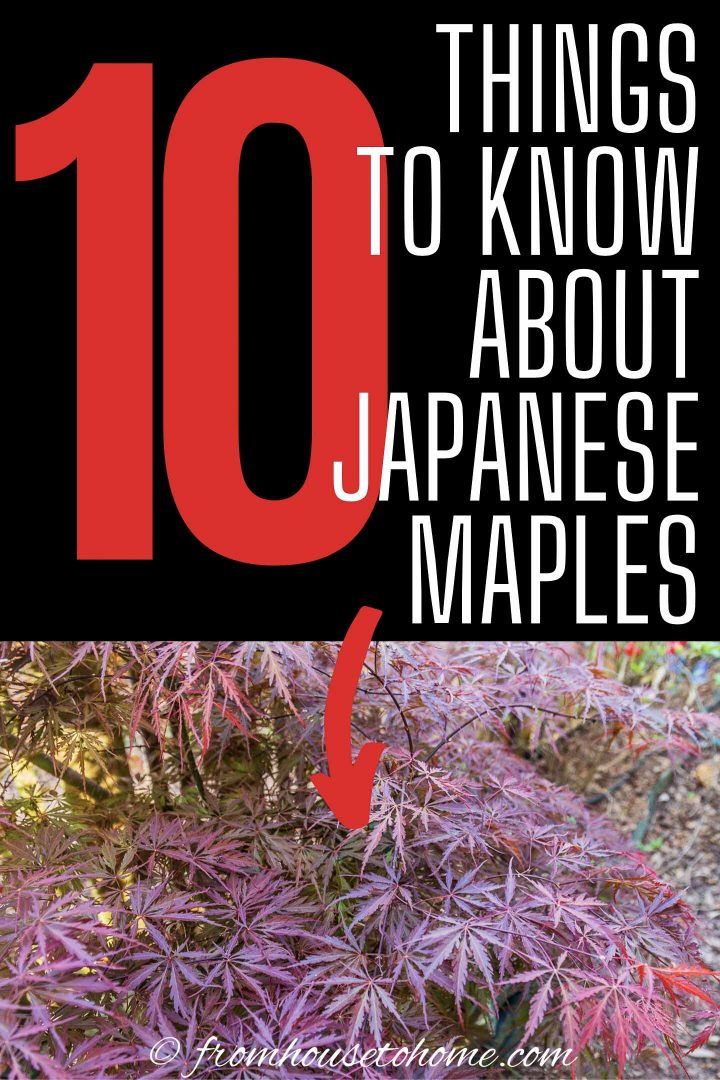
Recently got myself some Japanese maples train into bonsai ended up giving them some fertilizer thinking it would be beneficial before doing crucial research are my trees going to die or plummet because of it? If so how can I get the fertilizer out of the soil they have recently been repotted or will they be okay and just make sure not to do it again? And instead of mulch can moss be used?
Hi Braden…They should be okay. One application of fertilizer probably won’t hurt them. I haven’t tried growing them with moss, but I think it would be fine since it keeps moisture in the soil and helps to regulate the soil temperature.
Thank you for the response 🙏 you have any advice for leaf wilting on Japanese maples? Or leaf browning ?
Hi Braden…For Japanese Maple leaf wilting, there are a few different causes:
1. When the leaves are first coming out, they can wilt naturally (especially on young plants) and will recover on their own.
2. They will wilt if they get too much or too little water. The soil should be moist but not wet.
3. There are a few diseases that cause wilt. If this is the case, you will usually see black spots on the trunk. Unfortunately, there isn’t a good way to treat this problem, other than trying to prevent it by removing the affected areas of the tree and raking up any leaves that may have fallen on the ground.
4. Herbicides (eg. lawn weed killers) that have accidentally ended up close to the Japanese Maple can also cause the leaves to wilt.
The leaves usually turn brown because the plant is getting too much sun or it hasn’t been watered enough. Hopefully that helps!
My maples aren’t very big(as big as others planted the same time and are purple)
How can I fix this
Hi Tim…unfortunately, I don’t know of any ways to make them grow faster. It can take them a couple of years to get established, and some just grow slower than others. Make sure you are giving them enough water and be patient 🙂
How do you grow from a cutting?
Hi Frances…I have never tried growing Japanese Maples from cuttings so I’m not sure how well that would work. Sorry!
I found what looked like a clump of red seeds on a small red Japanese maple. Do these beautiful trees produce seeds, that could be planted?
Hi Jackie…sorry for the late response. Japanese Maples can produce seeds. I have never tried planting them, but you should be able to. Not sure if the new tree will have the same form as the original one, but it doesn’t hurt to try 🙂